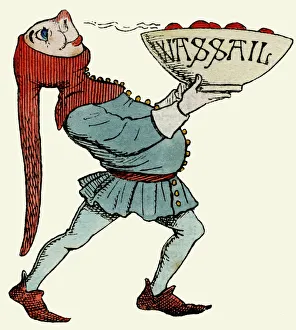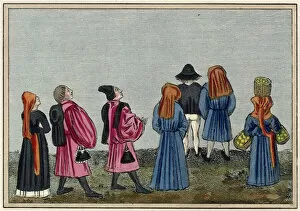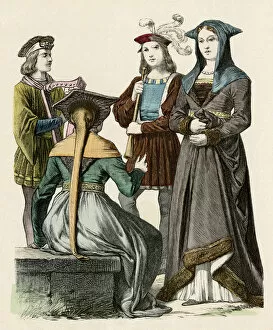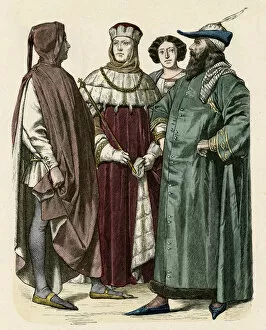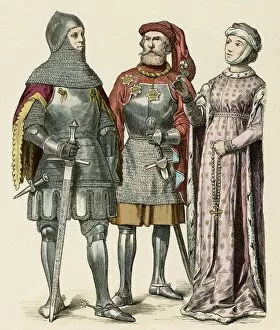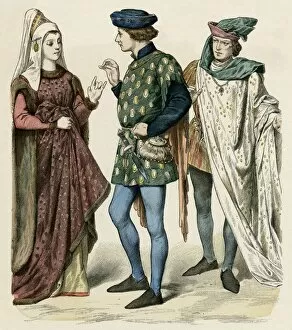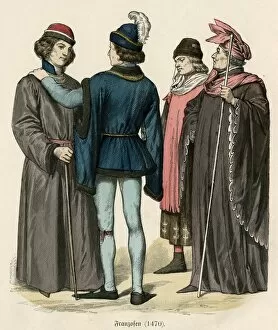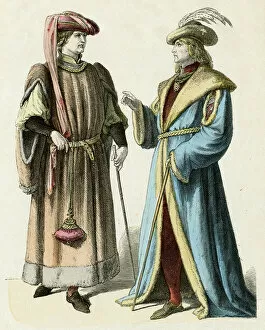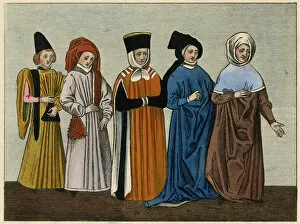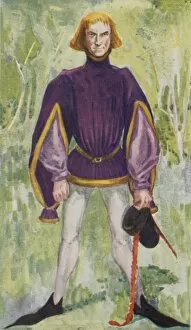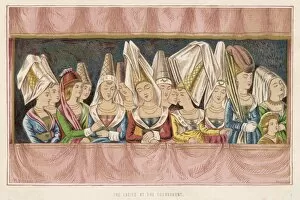Liripipe Collection
"Liripipe: A Fashionable Twist of History" Step back in time to the era of French Costumes from 1460-80, where jesters roamed the streets carrying wassail bowls
All Professionally Made to Order for Quick Shipping
"Liripipe: A Fashionable Twist of History" Step back in time to the era of French Costumes from 1460-80, where jesters roamed the streets carrying wassail bowls. These vibrant costumes featured a unique accessory known as the liripipe - a long, trailing hood that added an air of mystery and elegance. Both men and women embraced this fashion trend during the 1350s, donning elaborate ensembles consisting hoods, hose, short doublets or jerkins, and tall crowned hats. The male costume from 1375 showcased their love for intricate details and opulent fabrics. Moving across borders to Germany in the early 15th century, German costumes also incorporated liripipes into their attire. This addition brought a touch of sophistication to their outfits while maintaining cultural uniqueness. Meanwhile, Englishmen were not far behind when it came to embracing this fashionable accessory. In the 15th century English costume scene, individuals proudly wore liripipes with pride. From state officers to common folk like our jester friend mentioned earlier - everyone wanted a taste of this stylish trend. French nobles in the same period made sure they stood out among others by adorning themselves with extravagant garments featuring liripipes. Their outfits exuded power and grandeur as they walked through courtly halls. Not forgetting our female counterparts; English headdresses from the 15th century were adorned with delicate liripipes that gracefully cascaded down their backs. These headpieces added an ethereal charm to any ensemble worn by women during that time. As we delve deeper into history's wardrobe choices, let's not forget about those dapper Frenchmen who flaunted their style in 1470s France. With confidence radiating from every fiber of their clothing – including those mesmerizing liripipes – these gentlemen truly knew how to make a fashion statement.

